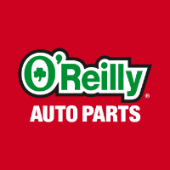-
Welcome to Auto Parts Forum
Whether you are a veteran automotive parts guru or just someone looking for some quick auto parts advice, register today and start a new topic in our forum. Registration is free and you can even sign up with social network platforms such as Facebook, X, and LinkedIn.
APA’s Steve Tucker: ‘Threats Are Just Opportunities’
-
Similar Topics
-
By Counterman
“Humans think AI is going to replace them,” says Mike Mohler, executive vice president and chief purchasing officer with the Automotive Parts Service Group.
“It won’t. Somebody using AI to be better than you will replace you.”
The integration of artificial intelligence in the aftermarket is more advanced than many people might realize, according to Mohler. It’s already yielding impressive results for those who are using it effectively. The primary challenge is not just the availability of data, but the effective use of that data to drive actionable insights and decisions. Mohler cites a report from Accenture showing that AI-driven price optimization can result in a 5% increase in gross margin and a 15% boost in revenue.
“You look at some of our competitors, and they’re able to post comparatively outrageous profit margins,” says Mohler. “They’re using AI for logistical prowess. They’re using it for customer service. They’re using it to get the right pricing in play.”
The ability to make informed decisions based on comprehensive data analysis is a major advantage of AI. Data scientists in the aftermarket industry are increasingly using the technology to turn large sets of data into actionable insights. This includes identifying market trends, customer preferences and operational inefficiencies. The application of AI in this area can lead to better strategic planning and improved business outcomes. Mohler says those applications can have a significant impact on profitability.
“Let’s say the average WD would have a 25-45% gross profit margin, given their business model. Some competitors are posting 58%. AI is going to be the tool to help them catch up. We’ve got to get to 53% minimum, I think. That’s a rarefied position, but it’s been tested by some of the smartest people that I know, and it should be achievable when we’re planning and we’re hoping that it is,” Mohler explains.
A Customer Experience Revolution
AI’s application extends to customer service as well. Chatbots and virtual assistants are now commonplace, offering customers quick and efficient service. These AI-driven tools have evolved to the point where they can engage in conversations that are increasingly indistinguishable from human interaction.
“I wonder how many people know that they’re talking to a chatbot when they’re talking to a chatbot?,” asks Mohler.
Navigating the Risks
Despite its advantages, AI’s integration into the aftermarket raises several concerns. Cybersecurity is one of them, as increased reliance on data systems introduces new vulnerabilities.
“We have employees with access to the internet at a thumb’s notice, and if we’re not careful, they can mistakenly click on something that could disrupt our business for months,” Mohler explains.
Mohler also expresses concerns about protecting intellectual property. Misuse of data or inadequate protection against competitive eavesdropping could undermine trust and impact the industry’s integrity.
“Once the data hits the public domain, how do we protect it and how do we make sure that it’s not being used against us? How do we know that we’re not enabling our competitor who’s able to electronically eavesdrop on one another like never before?,” asks Mohler.
Envisioning AI’s Next Steps
Mohler stresses that AI’s influence on the aftermarket is only in its infancy. Over the next 5-10 years, he envisions an advancement from a basic understanding of AI as an algorithmic tool to more specialized applications tailored to industry-specific needs.
“So my thought would be that companies would have their own internalized GPTs and industries would have their own internalized GPTs. My hope is also that we will become as skilled at selling to disembodied customers via e-commerce as we are at selling to them when they’re across the counter from us or in our stores,” Mohler says.
Mohler references the seven stages of AI when looking ahead to the technology’s impact on the aftermarket.
“When it comes to supply chain, when it comes to logistically moving products around, when it comes to optimizing sale price, optimizing customer service, my hope is that we will be a little closer to stage seven. Right now, we’re really at stage one and a half, maybe two,” says Mohler.
As the technology evolves, moving beyond its current capabilities, AI’s exact impact on the aftermarket, and countless other industries, will be even more profound. Companies that invest in AI and adapt to its changes will be well-positioned to thrive in the future of the automotive aftermarket.
“It’s incumbent upon us to understand AI and to become data scientists ourselves, because everybody’s got access to the data. Whoever can use the most disparate sources for the best outcomes is going to win in my overall view of it,” says Mohler.
The post
link hidden, please login to view appeared first on link hidden, please login to view.
link hidden, please login to view -
By Counterman
In link hidden, please login to view, we gave leaders from the major distribution groups and trade associations an opportunity to reflect on the most critical issues affecting the automotive aftermarket. For the second year in a row, we let distribution leaders “riff” on these topics in their own words.
Here’s what Sue Godschalk, president of Federated Auto Parts, had to say about Federated’s accomplishments thus far in 2023.
Federated Auto Parts got off to an exciting start at the beginning of the year with the announcement of our newly formed joint venture with the Aftermarket Auto Parts Alliance. Both groups immediately set to work as The Federated Alliance by evaluating areas where the combined membership could benefit through the elimination of duplication in areas such as data management, communication, education and training, and other important initiatives.
In March, we were excited to have our new co-venturers join us for the annual Automotive Parts Services Group (The Group) membership meeting, along with our partners from The Pronto Network, for an exciting four days at the Gaylord National Harbor in Maryland just outside of the nation’s capital. Having The Federated Alliance members and The Pronto Network members in attendance, as well as representatives from our best APSG supplier partners, the meeting attendance was well over 1,000 and by far our largest meeting ever. The meeting theme of “E Pluribus Unum” (Latin for “out of many, one”) fit the location and best describes The Federated Alliance and The Pronto Network coming together with many new and exciting initiatives for the coming year.
On March 1, the Federated Auto Parts marketing team kicked off the Federated “Suite-Stakes” program, which has become an exciting annual program for our members and their service-provider customers. Suite-Stakes ran through June 30 and is always a fun way for Federated members to grow sales with existing customers and gain new business. In the past two years, Federated awarded more than 9,000 prizes, and this year is no different with a long prize list featuring new prizes, including sales team and member rewards and customer training events, such as a trip to Florida for a three-day hybrid/EV training workshop held at the new Group Training Academy Training & Research Center. With new automotive technologies and stricter regulations for environmental compliance on the horizon, education and training will continue to be a priority for Federated in the long term.
Another exciting addition to the Federated marketing program is our new sponsorship of the World of Outlaws Sprint Car racing series. The work area for each race is now known as the “Federated Car Care Work Zone” and receives a lot of visibility as the professional crew members work on the cars during the 87-race season that can be viewed on DIRTVision. This sponsorship ties in perfectly with the very popular “Get Dirty with Kenny” dirt-track racing experience we have conducted year after year for lucky Federated customers.
As the saying goes, one year equals 365 opportunities, and as new-vehicle sales continue to be low and the existing vehicle age high, I am optimistic that the second half of 2023 will be strong and full of opportunities for our industry and our membership.
Federated Auto Parts
Founded: 1985 Headquarters: Staunton, Virginia Number of members/shareholders: 51 Number of distribution centers: 155 Number of parts stores: 1,500+ Number of suppliers: 200 Website: link hidden, please login to view The post
link hidden, please login to view appeared first on link hidden, please login to view.
link hidden, please login to view -
-
By Counterman
In link hidden, please login to view, we gave leaders from the major distribution groups and trade associations an opportunity to reflect on the most critical issues affecting the automotive aftermarket. For the second year in a row, we let distribution leaders “riff” on these topics in their own words.
Here’s what Steve Tucker, president of Automotive Parts Associates, had to say on the topic of consolidation in the aftermarket.
The consolidation of the aftermarket has been a conversation for so many years now that it almost seems unnecessary to discuss further. Far too many see the independent WD as just “hanging on” and perhaps even as a relic of bygone years. Those of us who live in this space every day know different!
There is no question that there are fewer individually owned and independent warehouse distributors out there. There are still hundreds out there, however, that not only continue to survive but are thriving. The strengths of the players in the independent space are often difficult for the big-box guys to replicate. These business owners operate very close to the street and can quickly adjust to changing market conditions, see trends and act accordingly.
Servicing the customer and handling issues quickly continue to be the primary drivers, and our companies excel in those areas without question. Having true professionals with extensive parts knowledge working with our customers is a key differentiator for us. While we all do substantial business online with our customers, there is no substitute for personal attention especially when an issue needs timely resolution.
Additionally, our companies continue to see value in supporting name brands. As vehicle complexity continues to mount, technician customers are looking for brands they trust to ensure the repair is done right, and so the independent aftermarket continues to support our customers with manufacturer brands whenever possible.
Another aspect of the business that has been growing at an ever-increasing rate is the availability of good data and tools to mine and use that data to tailor inventories, maximize space, control deliveries, and improve virtually every aspect of the business models. I feel strongly that this is a key area that all the program groups invested in to provide those tools to our memberships in an easy-to-use concise toolbox. Data is king, and knowing how to take that data and use it to maximize the rest of our capabilities is critical for success and growth.
We can then tie this all together with a strong and responsive industry association that all of us need to support as they look out for us at a national level not only with legislative issues, but also by providing support with environmental initiatives, economic information, and best practices support. Our Auto Care Association is one of the best ways we can all ensure our future and the future of those that follow us in the independent aftermarket. I think for most of us this isn’t just a career, it is truly a lifestyle, and we need to work with Auto Care to leave this business in a great place for the next generation.
I look at other businesses such as pharmacies, retail, hardware, etc., and while the big-box guys have certainly impacted there as well, I still see a big number of independent businesses operating there as well and they do so based on the same “blocking and tackling” mentality we use. Service the customer! As a parting thought, and if you haven’t done so, I recommend you watch the Tom Hanks movie “A Man Called Otto.” In one of the opening scenes, he is attempting to buy a 5-foot length of rope in a hardware store and the cashier cannot sell him rope by the foot because the system only sells in yard increments. Our folks would’ve figured it out!
The post
link hidden, please login to view appeared first on link hidden, please login to view.
link hidden, please login to view
-




Recommended Posts
Join the conversation
You can post now and register later. If you have an account, sign in now to post with your account.
Note: Your post will require moderator approval before it will be visible.